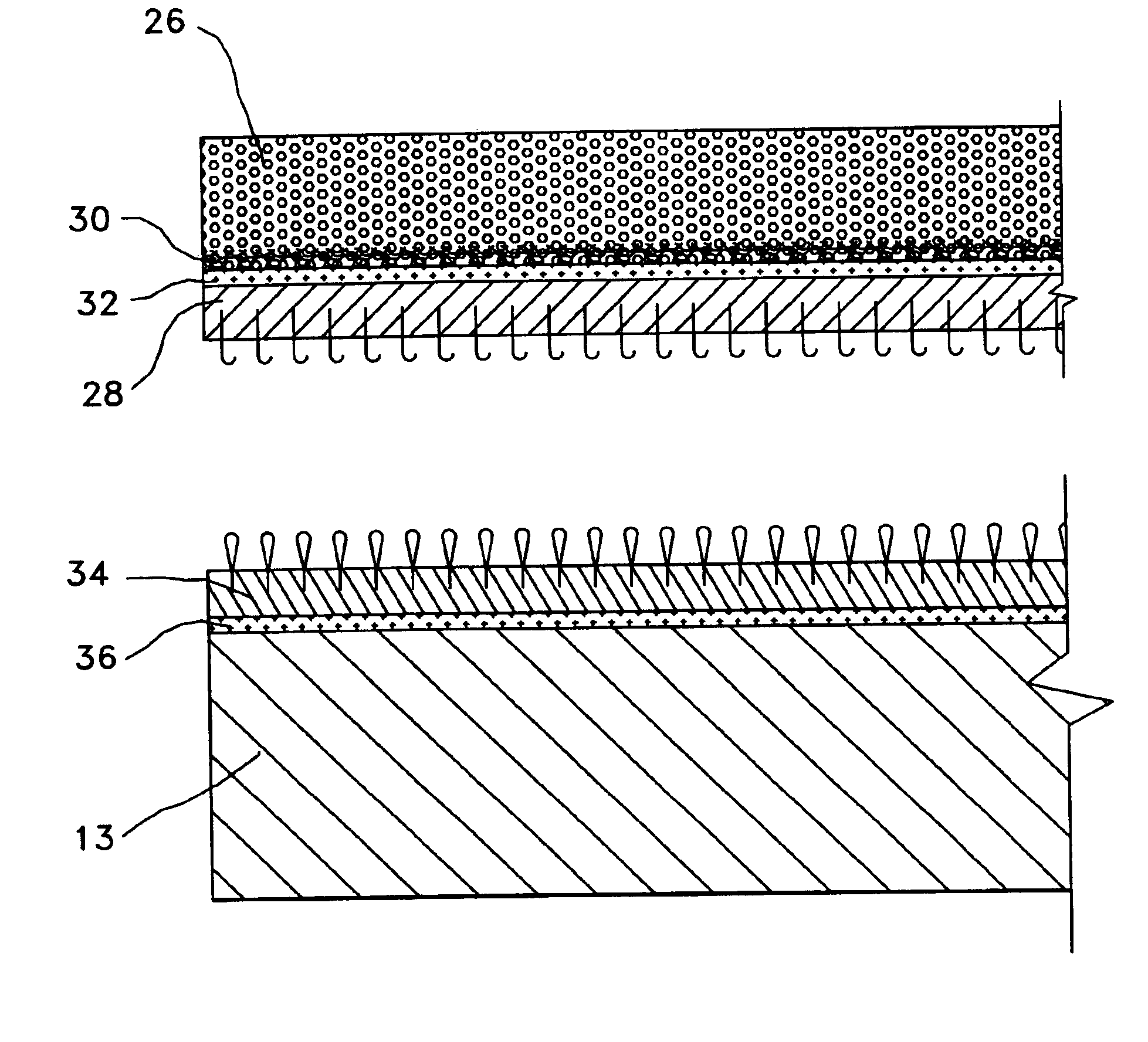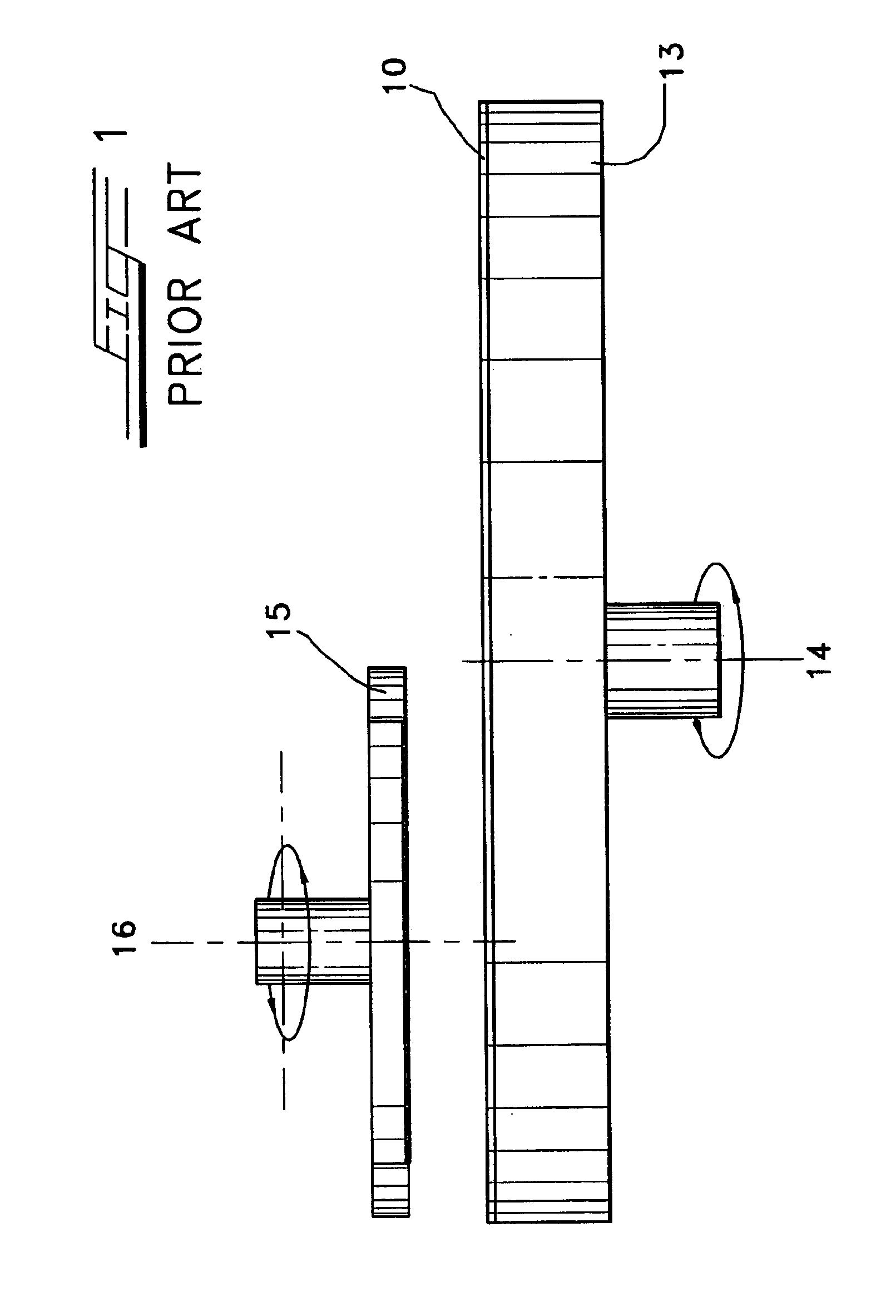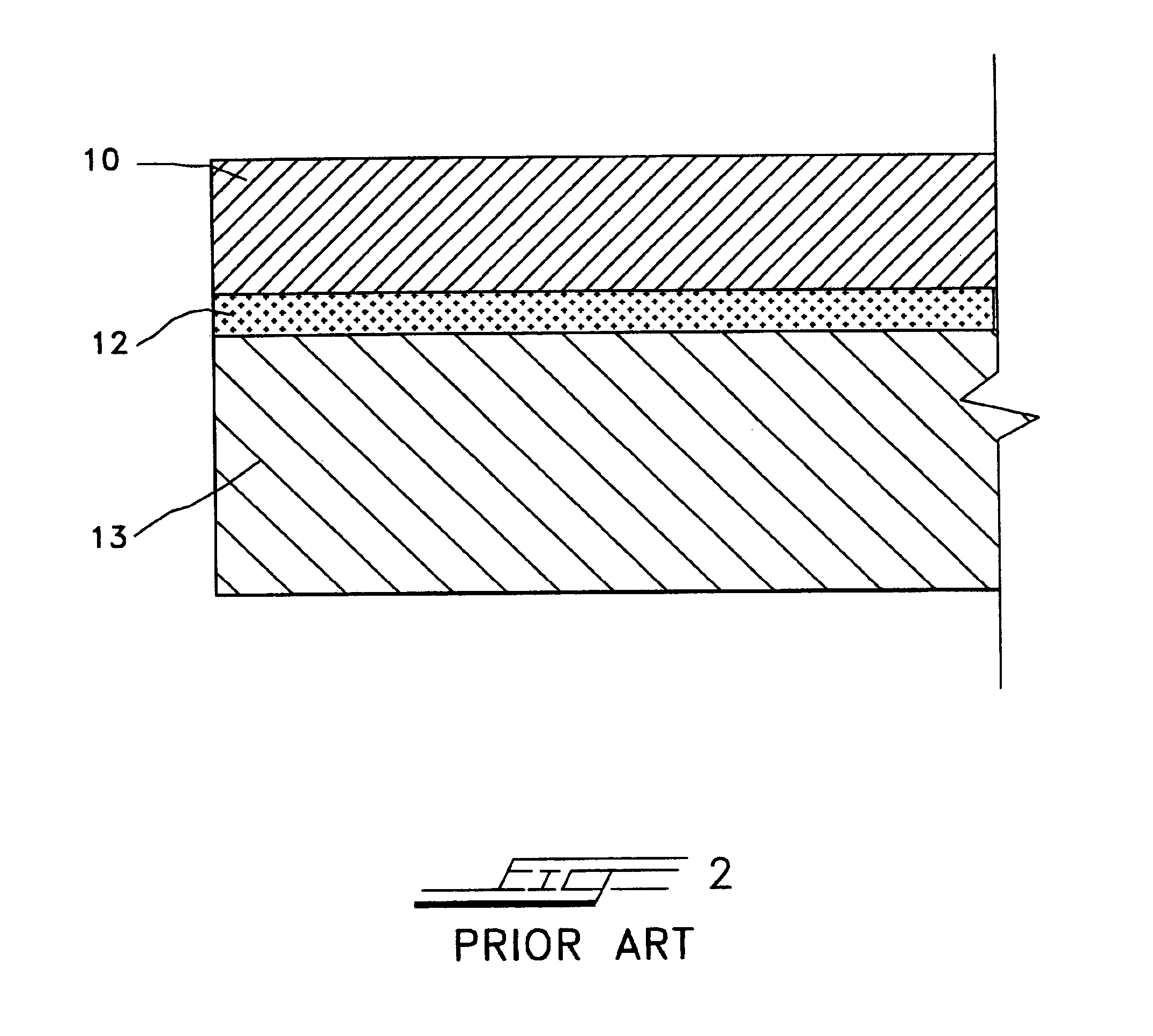Method for securing a polishing pad to a platen for use in chemical-mechanical polishing of wafers
a technology of chemical-mechanical polishing and polishing pad, which is applied in the field of material polishing, can solve the problems of increasing the changeover time, operator personal injury, and complex mechanism, and achieves the effects of improving safety, speeding up the changeover time, and avoiding undue stress and tim
- Summary
- Abstract
- Description
- Claims
- Application Information
AI Technical Summary
Benefits of technology
Problems solved by technology
Method used
Image
Examples
Embodiment Construction
[0014]Referring now to the drawings in greater detail, a typical CMP apparatus is shown in FIG. 1. A polishing pad 10 is affixed to a platen 13 that rotates about a fixed axis 14. The wafer to be polished is affixed to a carrier 15 that rotates about a fixed axis 16 which is offset from the platen's fixed axis 14 but which rotates in the same direction. The carrier 15 usually scans the surface of the pad 10 along axis 16 while applying downward pressure on the wafer during polishing. During the polishing process, a polishing slurry is introduced onto the surface of the pad. In some applications, slurry is introduced through the pad from the platen 13.
[0015]A typical, prior-art technique for securing polishing pad 10 to the platen 13 is shown in FIG. 2. The polishing pad 10 is attached to the rotating platen 13 via a pressure-sensitive adhesive (PSA) layer 12. Removal of the polishing pad is generally a difficult operation, since typical peel strengths of PSA layers tend to be quite ...
PUM
| Property | Measurement | Unit |
|---|---|---|
| shear strength | aaaaa | aaaaa |
| peel strengths | aaaaa | aaaaa |
| shear strengths | aaaaa | aaaaa |
Abstract
Description
Claims
Application Information
 Login to View More
Login to View More - R&D
- Intellectual Property
- Life Sciences
- Materials
- Tech Scout
- Unparalleled Data Quality
- Higher Quality Content
- 60% Fewer Hallucinations
Browse by: Latest US Patents, China's latest patents, Technical Efficacy Thesaurus, Application Domain, Technology Topic, Popular Technical Reports.
© 2025 PatSnap. All rights reserved.Legal|Privacy policy|Modern Slavery Act Transparency Statement|Sitemap|About US| Contact US: help@patsnap.com



